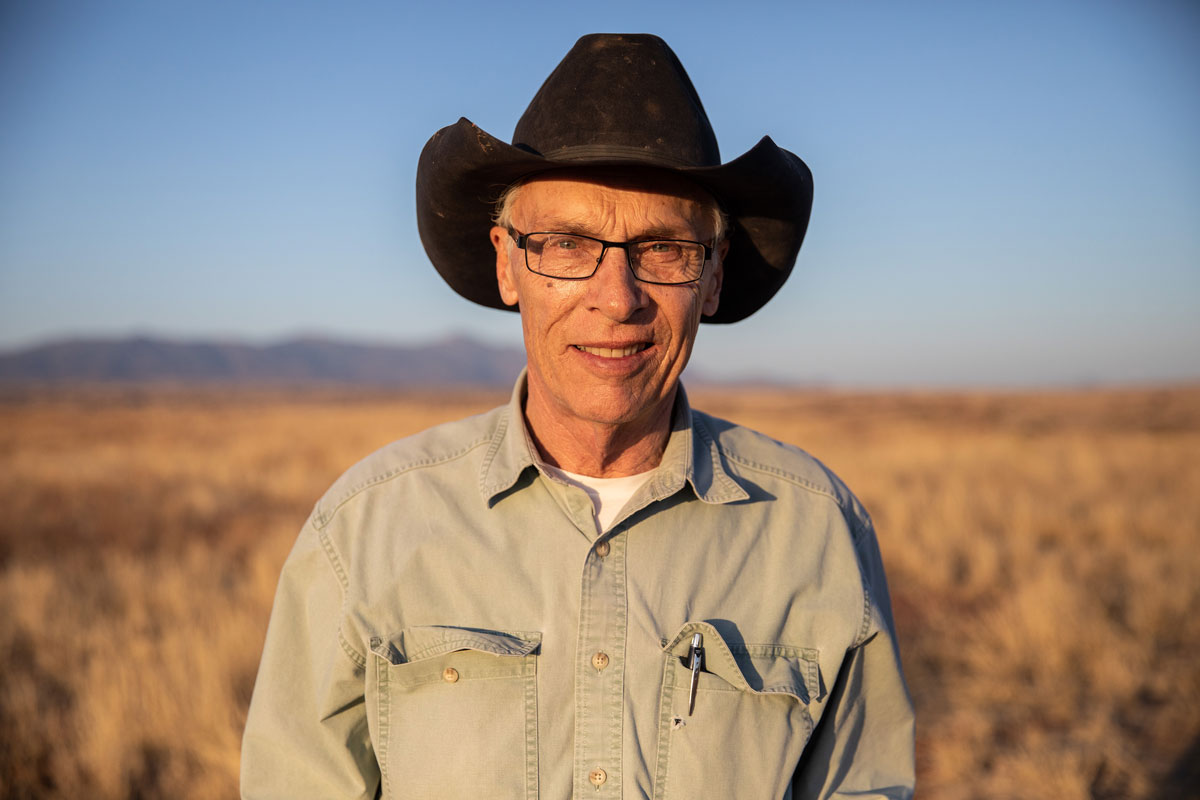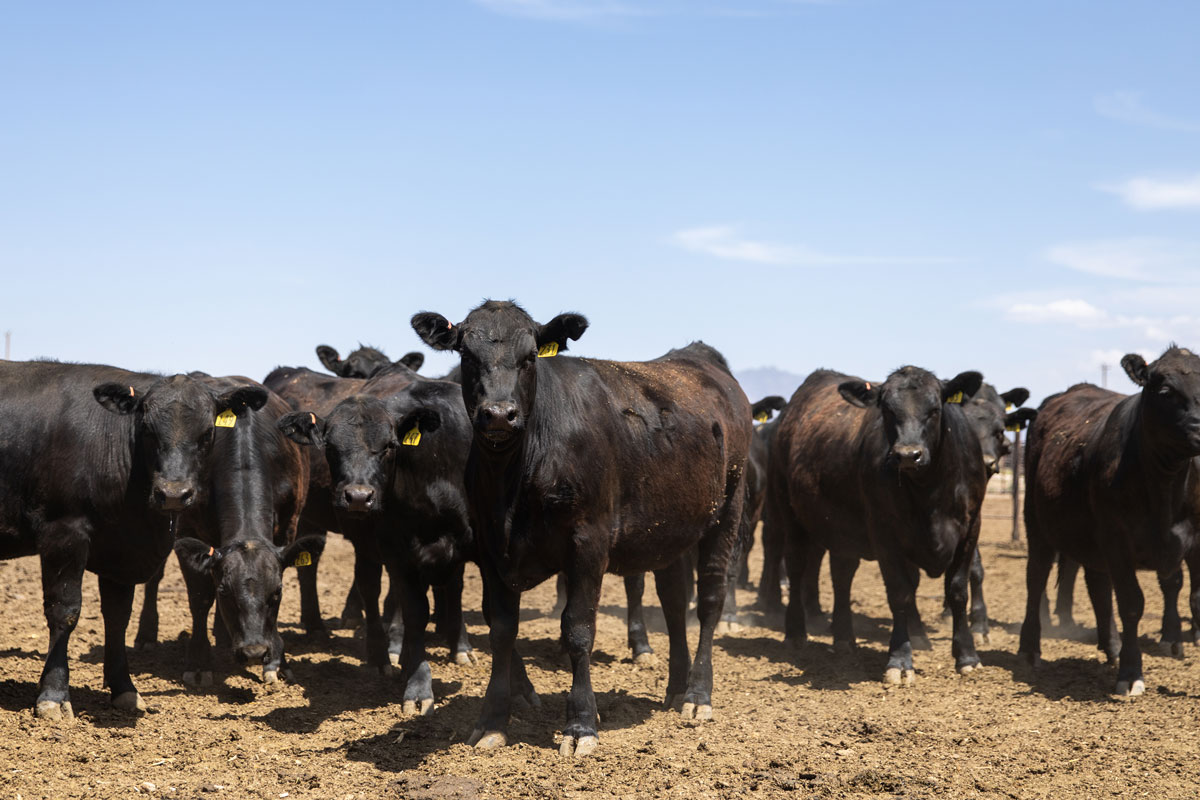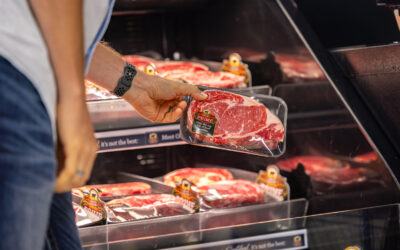
Arizona commercial cattleman awarded for commitment to excellence
Story and photos by Morgan Boecker
September 23, 2021
Ross Humphreys walks like a cowboy and talks like one, too. His adept gaits tells of many days in and out of the saddle on his ranch just south of Patagonia, Ariz. His story shares decades of learning by doing, most of which weren’t on a ranch. He isn’t your typical cowboy.
He wears many hats, but his black felt wide brim fits most naturally, shading him from the sun at San Rafael Cattle Company, south of Patagonia, Ariz. Off the ranch, you can find him in Tucson managing stocks and his publishing company.
Grit in every venture makes him a successful businessman, and his unrattled spirit makes the best of challenges. However, it’s his relentless drive for raising high-quality beef that earned him the Certified Angus Beef (CAB) 2021 Commercial Commitment to Excellence Award.

A different background
Humphreys grew up an army brat, moving frequently throughout his childhood. He earned a degree in chemistry and worked as a metallurgical engineer for a bit before going back to school for a Master of Business Administration. That sent him on a new route.
He’s held a lot of job titles in his 72 years, from strategic business advisor to book publisher and CEO of multiple companies, just to name a few.
In 1999 at 50-years-old, never having owned cattle or managed a ranch, he bought San Rafael Cattle Company. Admittedly, he took an unusual path to the cattle business.
“I stood on one of the hills with my older daughter and said, ‘Anybody could run a cow on this place because you can see her wherever she is,’” he says. “So that’s how we got started.”

Consistent little changes
With no agricultural background, Humphreys went straight to the University of Arizona and bought a Ranching 101 textbook.
Always curious, his questions led to new acquaintances, and Mark Gardiner, of Gardiner Angus Ranch in Kansas, became his teacher and connector.
“I’ve hardly ever spent any physical time with Gardiners,” Humphreys admits, “But if I called them up, they’d spend two hours on the phone with me answering questions.”
Humphreys leaned on good information and sound science. No ranch decision is made without running some math and looking at a spreadsheet.
By genetic testing his herd, he saw steady progress by buying a little better bull than the year before. He focuses his selection to ensure balanced cows that can raise replacement females and a calf crop that produces the best beef.
Humphreys confirms his plan works with results at the feedyard. Loads of his fed cattle have improved from 20% Prime in 2013 to 95% CAB or higher, including nearly 85% Prime today.
“My goal is to try to produce the best carcass I can,” he says. “So, I keep trying to nudge up my cow herd so that the calves will be even better the next time.”

Preserving today for tomorrow
Conservation is as much part of the San Rafael story as the cattle. Named after the San Rafael Valley, the ranch is nestled in Arizona’s high desert country bordering Mexico. It’s the north end of a rich ecological site that looks like the Great Plains and is home to various plants and animals, many on the endangered species list.
“Ninety-five percent of this ranch is perennial native grasses,” Humphreys says. “We are the last shortgrass prairie in Arizona.”
Conversations with conservation groups ensure that the ranching operation, endangered wildlife and habitat are protected from housing or industrial development. The easements with Arizona State Parks and the Nature Conservancy led to work with U.S. Fish and Wildlife and Natural Resources Conservation Service (NRCS).
The most important habitats on the ranch are water sources, including the Santa Cruz River, several springs and stock tanks. The endangered Sonoran Tiger Salamander is only found in stock tanks in the San Rafael Valley. Humphreys has developed water sources with support from NRCS grants, creating a mutual benefit for the cattle and wildlife.
Looking ahead
Environmental investment is key to Humphreys’ long-term goal of sustaining the land.
Even with intensive management, the land still needs water and the current Southwestern drought continues to challenge his resources. As a result, Humphreys sold roughly 65% of his cow herd this year.
Unsure if he will ever get back to pre-drought herd numbers, he remains committed to this final career as a rancher.
“I want to come home to a beautiful place,” he says. “I started doing this when I was 50, but I like the work. I like the cows.”
Ever the student, he meets each new challenge with a thirst for knowledge, determined to sustain, and focused on raising the best, one step at a time.
You may also like
CAB Sets Sales Records, Sees Historically High Brand Acceptance Rates
In an otherwise tough time in the beef business, sales and supply records have been a bright spot. The positive numbers mean that quality beef production has not let up, and beef demand is holding. Consumers have proven the value proposition: the good stuff is worth a little more money, for a better eating experience.
Feeding Quality Forum Dates Set Earlier in August
When you’re feeding cattle, it counts to keep track of every calf, pound and dollar. Beyond the event’s educational sessions, networking between segments of the beef supply chain is invaluable—from feeders and cow-calf operators to allied industry and university researchers.
Gardiners Highlight Service, Strength at Foodservice Leaders Summit
Mark Gardiner and his son, Cole, of Gardiner Angus Ranch offered a boots-on-the-ground perspective for CAB specialists attending the annual event, designed to deliver resources that help train foodservice teams and serve consumers at a higher level.



